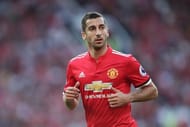Due to a lack of transparency in football deals, and clubs being privately owned, fans often receive information about player costs, transfers and wages through the media, unlike the NBA or NFL where player costs are displayed publicly to analyze how it affects teams’ salaries.
According to the Premier League website, Sky and BT subscription fees from UK viewers with domestic and UEFA regulations help boost the Premier League's television revenue. It's a good bargain for Premier League clubs as they rejoice in spending more than they earn, especially when it comes to individual spending caps for each team.
To put that into perspective, the total £3.6bn earnings of Premier League clubs in 2015-16, reported by The Guardian following their review of the club’s most recently published accounts, is projected to have increased to £4.5bn last season, the first of the league’s vastly more lucrative deals.
Chelsea, last season’s champions, were paid £151m from the Premier League’s TV and sponsorship distribution. Tottenham Hotspur, Manchester City, Liverpool and Manchester United all earned more than £140m, while Sunderland, who finished last, received £93m.
The concept of player costs is something that has to be understood as it helps teams calculate the value of players and the money they have to spend for that value. The “net spending” idea should be erased if viewers believe that is how clubs consider player costs. For example, on the books, Manchester United signed Henrikh Mkhitaryan from Borussia Dortmund for a transfer fee of £35m, which gives Mkhitaryan a salary around £180,000 per week to stay at Old Trafford for four years.

In reality, according to a report by The Guardian on the widely held myths about how clubs sign players, cash rich clubs such as United play the smart card, paying the entire transfer fee in the form of instalments to reduce the overall cost while increasing the value of a player for a lower cost over the span of two or three years.
Instead of recording Mkhitaryan's transfer fee as £35m for what he was bought, United record it as £8.75m in each of the next four years till his contract expires. Premier League clubs use this sort of universal accounting to examine player costs. There is much more to a transfer deal than meets the eye, especially after player bonuses, wages, and image rights come into the picture.
With Manchester United looking at Mkhitaryan's £8.75m per year and spending a reported £9.36m in wages (£180,000 per week multiplied by 52 weeks), his overall cost to the club becomes £18.1m per year. This £18.1m per year is what United paid attention to while purchasing the Armenian, not just his transfer fee.
While Manchester United are also happy about a zero net spend on striker Zlatan Ibrahimovic who signed on a free transfer, the Red Devils can boast about him adding well over £10m to the club's player cost last season.
A topic also rarely touched upon in transfer deals and wages is the image rights dispute between player and club in securing a deal. It is down to the player’s representatives to negotiate the best possible deal, protecting their client’s commercial and marketing assets. Taking into account that a player earns £75,000 per week in wages, his image rights payments allows his earnings to jump to the equivalent of £100,000 per week (usually it’s around an additional 20% plus a share of the net profits the club receive from appearance and endorsement activities the player carries out on their behalf).
Clubs tend to behave like hawks in terms of taking as much as they can from the image rights deal as possible. The goal is to enhance their hand with existing and future commercial partners. In 2006, as part of negotiations with Real Madrid, David Beckham demanded the Spanish football club relinquish their share (50%) of his image rights. With Real Madrid firmly against that proposition, Beckham dribbled his way to La Galaxy on a five-year contract worth £128 million where he had full control over his personal image rights, controlling how and when his image was used especially in endorsement and sponsorship deals.
A recent high-profile example of an image rights dispute was when Jose Mourinho was appointed the manager of Manchester United last year. Chelsea still owned a part of Mourinho's image rights, which United wanted to grab hold of because of the appeal of the Special One. And United have done just that, incorporating Mourinho into club-branded adverts with United’s kit manufacturer Adidas.
Football fans would also be interested to learn that even clubs employ agents to find potential buyers for players they wish to sell for the highest amount. An example of that would be the duo of Kia Joorabchian and Giuliano Bertolucci, who work as agents on behalf of football clubs. The duo assisted Chelsea and Tottenham Hotspur in sending top players Ramires and Paulinho to Chinese clubs in the past season. Interestingly, Joorabchian and Bertolucci are Ramires' and Paulinho's agents.
When a club asks the player's agent to be of service to them, the agent is responsible to keep the player in the loop with regard to the conflict of interest that exists. Unfortunately for the player being sold, the player's agent who works on behalf of the club is paid by the club for his or her services rather than the player.
